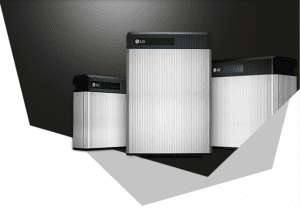Solar battery storage systems are becoming more and more common. Once seen as something that was used only by people who were attempting to live off the grid, today we know that solar batteries are for everyone. When it comes to making a solar battery purchase, there are a few concepts important to think about to ensure you choose the right solar battery.
Buy the Right Size Battery

Photo Credit: CleanTechnica
Like solar installations, there is not a “one size fits all” battery storage solution. Battery sizing is a vital step for both consumers and solar battery installers. It is important to understand your power needs to plan storage correctly. Frequently, we see PV battery systems that are undersized because system loads were underestimated. Cost also plays a role…meaning the more energy a battery can store, the more expensive it might be. However, ensure your PV battery installer uses a calculator provided by a battery manufacturer to determine battery capacity for the load it needs to carry for each homeowner.
Think About the Cost of Owning a Solar Battery

- The cost of ownership should also be taken into account before making a PV battery purchase. First, ticket price. Although a less expensive battery may seem more attractive, often lesser quality batteries come with a smaller price tag. That means the battery may not last as long or could demand replacement much earlier in time. Frequent battery replacements will boost the cost of the battery over time.
- Another important aspect to look at is capacity, or how much energy can be stored. Batteries with very small storage capacity may not provide the energy storage necessary to make the storage relevant.
- Finally, the cycle life of a battery is important to consider. The cycle life provides the number of discharge/charge cycles a battery can provide before capacity drops. Batteries from different manufacturers may have the same load capacity but may differ in how long the battery will cycle. Design, materials and processes will all effect the quality of the battery.
The Rating of a Battery

Photo Credit: Solar Electric Company
Battery rating is another important characteristic to look at. The rating listed on the nameplate is the fully developed capacity. It takes at least 100 cycles to determine the actual capacity of a battery – so, be mindful of batteries that promise full capacity at the time of purchase. Batteries with 100+ cycle warm-up will always outlast those proclaiming a high initial capacity.
There is no doubt that the future of solar is in batteries. When you are ready to explore the best batteries for your home or business, reach out to our Energy Advisers today. As we roll into the new year, taking advantage of the last year of the 30% tax credit will save you money today, and in the long run.
Here are some articles you may find helpful:
Top 10 Questions You Should Ask Any Solar Company
What are my Solar Finance Options?
Why are Solar Mounting and Racking Systems So Important
Do Solar Panels Add Value to My Home?
An Update on Tesla and Solar City


Leave a Reply